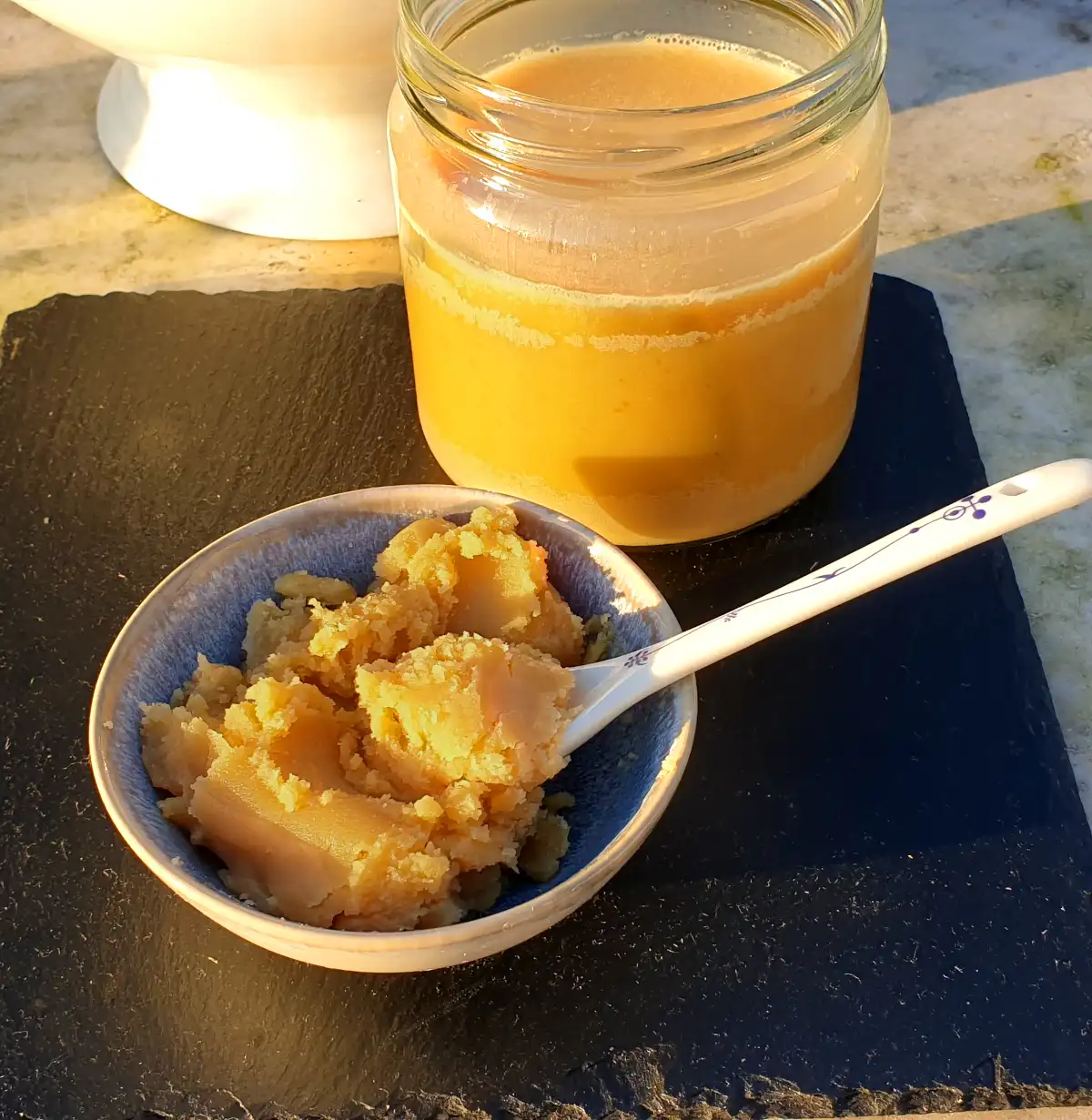Ayurvedic ghee - homemade
- Gluten free
Preparation time: 60 min - Difficulty level: easy
Ingredients for 2 jars of 250 ml ghee each:
- 2 screw-top jars - sterilized
- 1 saucepan (preferably with a thick base)
- 1 ladle
- 1 fine kitchen sieve
- linen/cotton cloth, coffee filter bags or kitchen paper for straining
- 500 g organic butter sweet cream
- 2 screw-top jars - sterilized
- 1 saucepan (preferably with a thick base)
- 1 ladle
- 1 fine kitchen sieve
- linen/cotton cloth, coffee filter bags or kitchen paper for straining
- 500 g organic butter sweet cream

How to make your ghee:
Put the butter in the saucepan and let it melt slowly over a low heat without a lid. After a while, the liquid butter will start to bubble and the water will begin to evaporate. Stirring is not necessary - the ghee almost makes itself. You don't need to stir.
A little later, a thick white foam forms on the surface. This is the milk protein settling out. Use the slotted spoon to scoop it off little by little. If you are doing something else in the meantime, it is sufficient to remove the foam every quarter of an hour. It is no longer needed.
During the whole process, make sure that the butter does not get too hot and burn. A fine, light brown deposit is fine, do not let it get too dark. This takes about 30 minutes.
As soon as no more foam forms and the liquid has a clear, golden color, the ghee is ready.
Now place the sieve or cloth over your cleaned glass jar and pour the ghee through it. This will filter out the last solid components.
Only close the jars when your ghee has completely cooled and solidified. This will allow moisture to escape and your ghee will keep for longer. At normal room temperature, it will take a few hours.
Store it away from light. It does not need to be in the fridge. If you have worked properly, your ghee will keep for at least 1 year.
Product info:
Although butter consists largely of fat, it also contains water, lactose and protein. During the production of ghee, these components are removed from the butter. This leaves behind the pure fat, which can also be tolerated by people who otherwise react to lactose.
Ghee has a golden color and tastes wonderfully buttery, with a slight caramel note. It can be heated to high temperatures and is therefore suitable for frying, roasting and deep-frying. You can use it as a substitute for butter in baking. Feel free to use 20 % less than specified in the recipe.
The fatty acids in ghee remain stable up to 19O degrees and the smoke point is even said to be 250 degrees. However, we have not yet tested this.
Spread on bread or toast, ghee offers you a delicious alternative to conventional butter.
Its nutty aroma gives rice dishes, vegetables or soups a special touch.